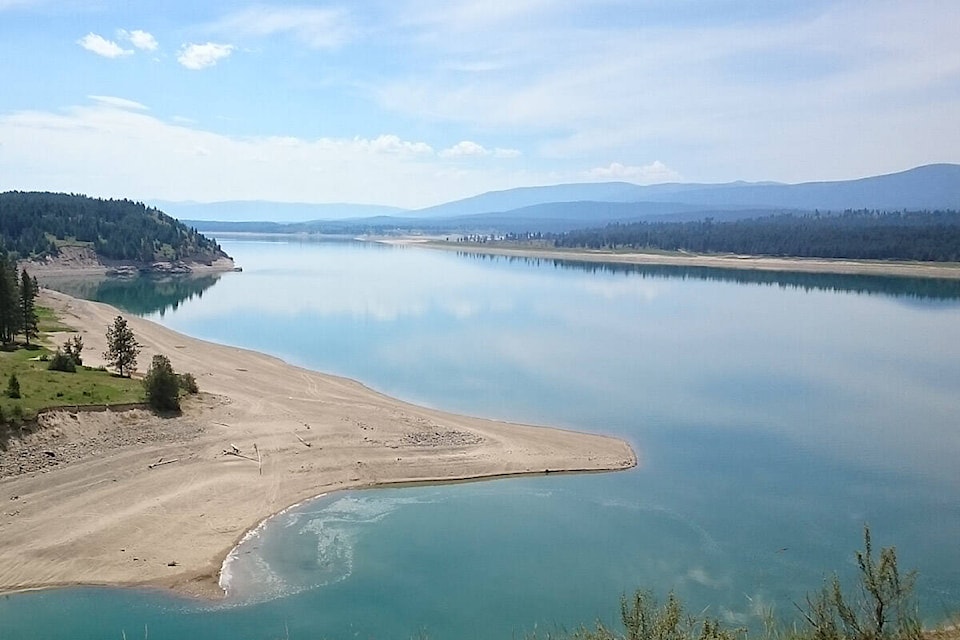Setting up a collaborative governance body and creating a two-year study board comprised of experts and knowledge holders will be key initiatives as part of an effort to study transboundary water pollution in the Elk-Kootenai watersheds.
The effort is part of an agreement between Canada and the United States, in partnership with the Ktunaxa Nation, to investigate water pollution concerns, particularly around selenium, by referring the issue to the International Joint Commission (IJC).
“Water quality concerns in this watershed have been present for decades and we are pleased that the IJC has been tasked to work on this matter further to a consensus reached between Canada, the United States, and the Ktunaxa Nation,” said Merrell-Ann Phare, the IJC’s Canadian Chair, in a press release. “Governance innovation with Indigenous Peoples will be a key component to our success.”
The IJC is a non-partisan entity created by the century-old Boundary Waters Treaty between Canada and the United States, which prevents and resolves transboundary water issues between the two countries. It employs joint science-based fact-finding as a foundation for building consensus and determining appropriate action.
The governance body will review reports and recommendations from the study board, suggest necessary resources to collect data, identify opportunities that aren’t duplicative of other regulations that are supported by science and Indigenous knowledge to reduce and mitigate impacts of water pollution, and develop an action plan and progress reporting framework.
Specific to the study board, the intent is to gather data, scientific research and Indigenous knowledge on sources, influences and trends for water pollution on fish and aquatic life, wildlife, human health, and cultural uses in the Elk-Kootenai watershed.
The terms of reference for to establishing a governance body is expected to be set by June 30, 2024.
Over the next two years, the Commission will facilitate the governance body, set up a study board and will maintain open dialogue with federal and Ktunaxa governments, the province of British Columbia and the states of Idaho and Montana.
The Commission will hold initial meetings in the basin in the coming months to allow interested parties to provide their input.
While the IJC is forming the governance body and working through the study board, governments will continue their own efforts to reduce and mitigate water pollution in their own jurisdictions.
Additionally, the IJC will not unilaterally impose any regulations or recommendations as part of the process.
“The Commission welcomes the opportunity to assist governments to help find ways to reduce and mitigate the impacts of water pollution in the Kootenai Basin and to collaborate with all interested parties in doing so,” said Gerald Acker, United States Commission Chair. “Our ability to provide objective, expert analysis and recommendations is proven and we expect nothing less in this case.”
The IJC has had an impact with transboundary water issues elsewhere with water quality issues in the Red River and Lake Winnipeg in Manitoba. The IJC, in partnership with the International Red River Watershed Board, worked to identify water quality objectives that were later adopted by Canada and the United States to address frequency and severity of algal blooms stemming from excessive nutrients in Lake Winnipeg and the Red River watershed straddling the international border.
In the case of the Elk and Kootenay watersheds, the Ktunaxa Nation has been calling for an IJC reference for over a decade, in response to water pollution fears in the region, from the Elk River flowing into the Lake Koocanusa Reservoir and into the United States.
In 2022, the IJC notified both Prime Minister Justin Trudeau and U.S. President Joe Biden regarding water quality concerns covered under the Boundary Waters Treaty, which were raised by the Ktunaxa Nation and others on both sides of the international border.
In the letter, the IJC noted that measured selenium levels had reached 9.46 ug/L in the Elk River, 4.99 ug/L in Lake Koocanusa, and 1.4 ug/L in the Kootenai River.
In British Columbia, the selenium limit, as as guideline rather than enforceable limit, is 2 ug/L, while Montana’s environmental regulation is 0.8 ug/L.
At the time, the IJC recommended a joint reference with participation from both the Canadian and U.S. governments, even as Montana Senator Jon Tester later suggested that the United States go at it unilaterally.
Outside of the scope of the IJC reference, both Canada and the United States continue efforts to update the Columbia River Treaty. Global Affairs Canada confirms the work occurring through the IJC reference will have no influence on the treaty renegotiation.
The Columbia River Treaty, ratified in 1964, is water sharing agreement between the two countries created on a foundation of water management and power generation.
Indigenous Nations in the Columbia Basin were invited to participate in the process to modernize the agreement, highlighting the significance of ecosystem functions and treating the Basin as a one-river ecosystem.
Indigenous consultation was next to nonexistent when the treaty was first ratified, as the creation of the reservoirs for three dams in Canada and one in Montana flooded out communities and impacted cultural and heritage values, and adversely impacted forestry, agricultural and tourism industries.
There have been 19 formal rounds of talks between the two countries since the renegotiations began in 2018.
